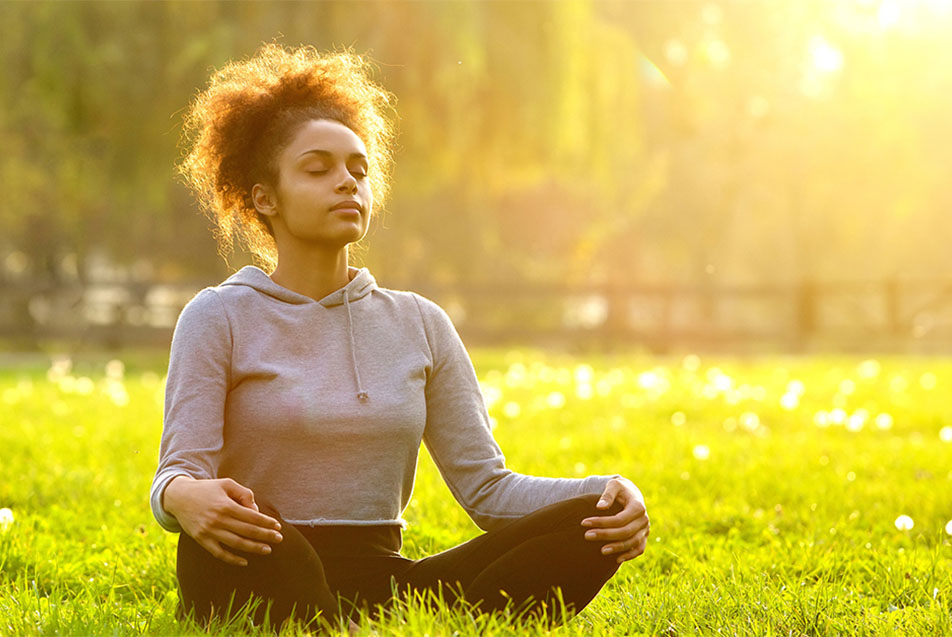Transform Your Attitude with Basic Steps on How to Meditate?
Transform Your Attitude with Basic Steps on How to Meditate?
Blog Article
How to Meditate: A Step-by-Step Strategy to Achieving Mindfulness and Calmness
Reflection functions as a powerful device for achieving mindfulness and emotional tranquility in a fast-paced world. By recognizing the fundamental concepts and techniques associated with reflection, individuals can grow a practice that boosts their general health. This discussion will detail vital actions, from creating a helpful environment to integrating reflection right into daily routines. As we discover these parts, it becomes clear that the journey to mindfulness is not merely regarding the act of resting in silence, yet rather concerning fostering a deeper connection with oneself and the world around us. What might this improvement require?
Comprehending Meditation
Comprehending reflection includes realizing its basic concepts and methods, which offer as the foundation for the technique. At its core, reflection is a mental exercise targeted at advertising leisure, constructing inner energy, and establishing concern and understanding. The method urges people to concentrate their interest, commonly with methods such as deep breathing, visualization, or mantra rep.
Meditation can be categorized into various styles, including mindfulness, transcendental, and loving-kindness reflection, each with unique objectives and methodologies. Mindfulness reflection highlights present-moment understanding and non-judgmental observation of sensations and thoughts, while copyright entails making use of particular mantras to go beyond ordinary idea processes. Loving-kindness reflection concentrates on developing an attitude of love and empathy in the direction of oneself and others.
No matter of the method used, the key objective stays consistent: to grow a much deeper understanding of the mind and its patterns. This self-awareness promotes psychological strength, clearness of thought, and an extensive sense of calmness (How to meditate?). By comprehending these methods and concepts, individuals prepared for an effective meditation practice that can significantly boost their general health
Planning For Your Technique
Prior to beginning your meditation method, it is necessary to develop an environment helpful to focus and relaxation. Ensure that the area is clean and cost-free of mess, as a tidy atmosphere can assist get rid of the mind.
Consider the lights, as natural light can boost your state of mind and power. Soft, cozy lighting is typically a lot more relaxing than harsh fluorescent lights. Additionally, choose a comfortable temperature, making certain that you are neither too hot nor too cold.
Incorporating elements that promote serenity can additionally boost your experience. This could consist of soft pillows or blankets for comfort, as well as soothing aromas from important oils or incense. It can also be advantageous to have a timer set for your reflection session to prevent interruptions from clock-watching.
Fundamental Meditation Strategies

One more reliable technique is body check reflection. This involves psychologically checking your body from head to toe, noticing any locations of tension or discomfort and purposely unwinding those muscle mass. This technique fosters a deeper connection between your body and mind.
:max_bytes(150000):strip_icc()/woman-couch-meditation-breathing-56a905355f9b58b7d0f75f55.jpg)
Last but not least, loving-kindness reflection concentrates on cultivating compassion in the direction of yourself and others. Silently repeat expressions of a good reputation, improving emotional health and interconnectedness. Each of these methods works as a structure for your meditation journey, permitting you to find the approach that reverberates ideal with your personal practice.
Keeping Focus and Mindfulness
Establishing a devoted meditation area can improve the ability to keep mindfulness. A quiet, clean atmosphere lessens disturbances, enabling much deeper immersion in the technique. Additionally, setting a time limit can help manage assumptions; beginning with much shorter sessions may relieve the shift into longer methods.
Utilizing techniques such as body scanning or observing sensations can also bolster mindfulness. These methods urge practitioners to stay present and engaged with their physicality, securing their focus in the moment. Regular technique is essential; the brain builds durability with time, producing a more powerful ability for emphasis.
Incorporating Reflection Into Every Day Life
Incorporating reflection right into life can transform routine tasks into possibilities for mindfulness and self-reflection. By incorporating mindfulness practices right into typical tasks, people can cultivate a better feeling of existence and tranquility among the busyness of day-to-day life.
Begin by determining minutes throughout your day where you can practice and stop briefly mindfulness. Also ordinary activities like washing recipes or strolling can come to be possibilities for meditation by guiding your attention to the sensations of motion and the audios surrounding you.
Furthermore, setting apart devoted times for reflection can enhance its technique. Start with short sessions, progressively raising duration as you become much more comfy. Usage suggestions or signs-- like a particular time of day or a soothing noise-- to establish uniformity.
Eventually, the objective is to weave mindfulness into the material of day-to-day live, enabling you to approach each minute with purpose, therefore boosting your general sense of well-being and clarity.
Conclusion
In final thought, effective meditation needs a silent atmosphere, a comfortable setting, and an emphasis on the breath. Routine meditation, even in short sessions, cultivates a deeper connection to the present moment, ultimately leading to better tranquility and psychological quality in day-to-day life.
Reflection can be classified right into various styles, consisting of mindfulness, transcendental, look these up and loving-kindness meditation, each with distinctive functions and methods. Mindfulness reflection emphasizes present-moment awareness and non-judgmental monitoring of feelings and ideas, while copyright involves the use of certain rules to transcend average idea procedures.With your reflection space prepared, it's time to check out numerous basic reflection methods that can aid cultivate mindfulness and inner peace.Constantly maintaining focus and mindfulness throughout meditation can be challenging, specifically for those brand-new to the practice.Developing a committed meditation room can improve the capability to preserve mindfulness.
Report this page